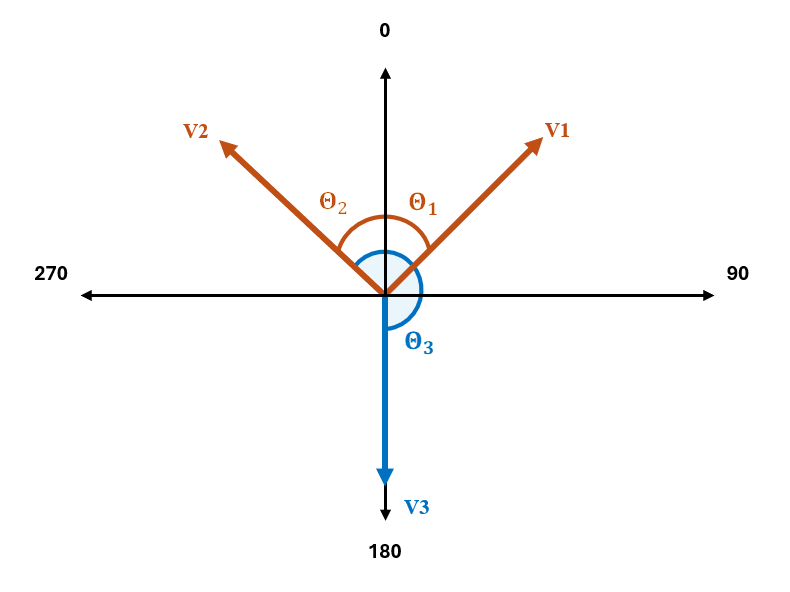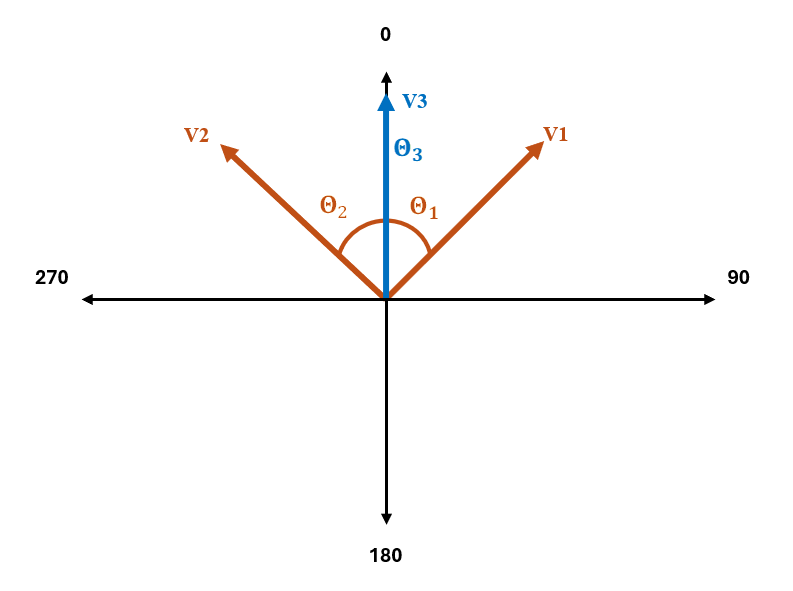This page details the supported wind datasets within the SolarAnywhere Data Portal and API, which are important for PV system design, stowing strategy, project risk-assessment and energy yield estimation. Wind datasets are available in both our web-based Data Portal and API for all historical license types.
Importance of Wind Data in PV System Development and Operations
Design Considerations and Stowing Strategies:
Wind speed, direction and gust impact the stability of solar panels and mounting structures. As developers design robust and durable installations, they rely on accurate wind data. In addition, modern tracking systems now allow customizable stowing practices, incentivizing owners and operators to explore various stowing strategies1 with independent row control to mitigate damage during severe storms.2 These strategies may involve setting maximum wind gust triggers for initiating stow, shielding interior rows with exterior rows, optimizing stow angles and defining safe conditions for exiting stow. Wind data plays a critical role in ensuring safety and reducing risk in system design and when stowing.
Risk Assessment:
Extreme weather risks are assessed using wind data during resource assessment. Understanding historic wind patterns allows for better anticipation of potential damage and plan for mitigation. Harmful panel vibrations can also be predicted by analyzing wind data, which helps reduce mechanical fatigue and ensures system reliability.
Energy Yield Estimation:
Wind can impact energy production. For example, strong winds enhance panel cooling, improving overall performance. Wind data can be used to optimize the layout for panel cooling to maximize and estimate energy yield.
Wind Fields
Table 1: Supported Wind Fields, Timeseries
| Data Field | Spatial Extent | Resolution (Spatial, Temporal) | Temporal Coverage | Units of Measure | Applicability |
|---|---|---|---|---|---|
| Wind Gust, 10 m | +/- 60 Degrees | 31 km, 15 minutes | 1998 – trailing 45 days | m/s | Risk assessment, mechanical design and stowing strategy |
| Wind Speed, 10 m | +/- 60 Degrees | 31 km, 15 minutes | 1998 – trailing 45 days | m/s | PV modeling inputs and definition of operating conditions |
| Wind Gust, 100 m | +/- 60 Degrees | 31 km, 15 minutes | 1998 – trailing 45 days | m/s | PV modeling inputs |
| Wind Direction, 10 m | +/- 60 Degrees | 31 km, 15 minutes | 1998 – trailing 45 days | degrees | PV mechanical design |
| Wind Direction, 100 m | +/- 60 Degrees | 31 km, 15 minutes | 1998 – trailing 45 days | degrees | PV modeling inputs |
Wind speed data fields represent the average wind speed at the specified height above the surface over the measurement period. Wind gust is recorded as the maximum wind speed measured over 3-second intervals during the measurement period. Wind direction is defined as the direction from which the wind is coming in units of degrees, clockwise from north, where north is defined as 0 degrees.
SolarAnywhere wind data is represented in the following data types.
Table 2: SolarAnywhere Data Types Including Wind
| SolarAnywhere Data Types | Description | Data Portal | API |
|---|---|---|---|
| Typical Meteorological Year (TMY) | Selection of historical month over period of record, weighted by irradiance | Yes | Yes |
| Timeseries (TS) | Historical time series, subhourly observations | Yes | Yes |
| Average Year Summary (AYS) | Monthly historical averages over period of record | Yes | Yes |
| Probability of Exceedance (PXX) | Calculated value based on period of record | Yes | Yes |
| PV Power Simulations | Wind datasets automatically used in SolarAnywhere PV simulations | No | Yes |
How to Access
Wind data fields are currently offered through Typical Year, Typical Year+ and Sites license licenses, with access through the SolarAnywhere online data portal or SolarAnywhere API.
Access via the SolarAnywhere Website
Wind data fields are available under “datasets” in the “Download Options” menu when downloading SolarAnywhere data from the online data portal. Users may request these files and generate output in two distinct file formats: SolarAnywhere and TMY3 . Please note that TMY3 does not include all wind fields, as this is a file format not defined by SolarAnywhere.
To download a file containing Wind data:
- Select a location for download by searching the site location or selecting a pin location on the map.
- Click “Download Options”
- Select a “Data File Type” (TGY, TDY, PXX, Time Series, Aggregated Timeseries, or AYS).
- Select desired wind data fields (e.g., Wind speed (10m), Wind speed (100m), Wind direction (10m), Wind direction (100m), Wind gust) under “Datasets.”
- Choose the desired delivery format and delivery method. When finished, click “Download” to generate the file.
- Navigate to the Download tab to download and view the file.
Users can demo downloading Wind data with SolarAnywhere Public.
Access via the SolarAnywhere API
Wind data fields can also be requested through the SolarAnywhere API. Visit the API documentation page for an example of a wind data request.
Average Wind Direction Using Mean Angle
Wind direction is communicated in degrees from north, with possible values ranging between 0–360. In this coordinate system, simple number averaging is not appropriate because the resulting value does not reflect the typical wind direction. Take, for example, the situation below where the resulting angle is opposite of the original.
Number Average Not Appropriate for Wind Direction:

Instead, SolarAnywhere represents average wind direction using a mean-angle approach3. Following from the example above, the appropriate resulting mean angle is 0 degrees. Mean angles are computed using the following method and formula, with resulting values also within the range of [0, 360) degrees from north.
Formula for Mean Angle:
Correct Mean Angle Computation:

Aggregations: Average or Max?
Historical aggregations differ by data type. For instance, it is more useful to return the maximum wind gust in the period of record rather than the simple average. Likewise, we should return the mean angle of wind direction rather than the number average. Specifications for each data field are tabulated below.
Table 3: Wind Aggregation Types – TMY, Average Year Summary
| Data Field | Data Type | Aggregation | Data Field |
|---|---|---|---|
| Wind Gust | Average Year Summary, TMY | Maximum | Wind Gust |
| Wind Speed, 10 m | Average Year Summary, TMY | Number Average | Wind Speed, 10 m |
| Wind Speed, 100 m | Average Year Summary, TMY | Number Average | Wind Speed, 100 m |
| Wind Direction, 10 m | Average Year Summary, TMY | Mean Angle | Wind Direction, 10 m |
| Wind Direction, 100 m | Average Year Summary, TMY | Mean Angle | Wind Direction, 100 m |
Data Interpolation
Native temporal resolution for wind datasets are 60 minutes. SolarAnywhere applies a linear interpolation to make it consistent with our other subhourly temporal time-series resolutions of 15 minutes.
References
- Array Technologies, Inc. (n.d.). The Challenge of High Winds at Utility-Scale Solar Sites. https://arraytechinc.com/array-passive-stow-technology/.
- Weaver, J. (2021, November 8). Storm damages shine spotlight on ways to mitigate impact of wind on PV arrays. pv magazine. https://www.pv-magazine.com/2021/11/08/storm-damages-shine-spotlight-on-ways-to-mitigate-impact-of-wind-on-pv-arrays/.
- Circular mean (2024) Wikipedia. Available at: https://en.wikipedia.org/wiki/Circular_mean